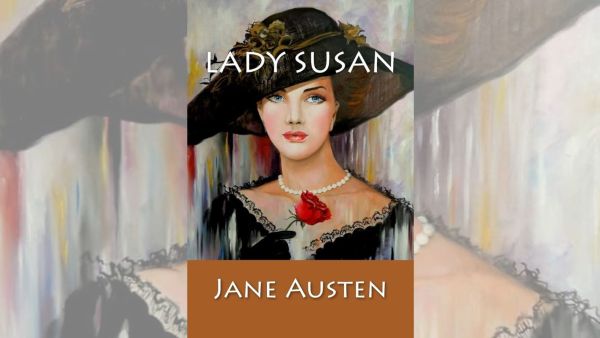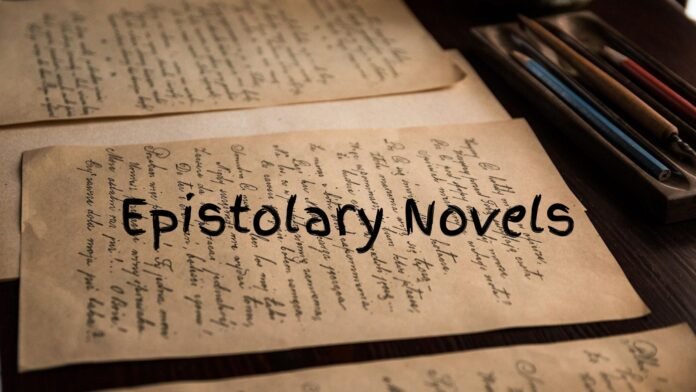“Letters are among the most significant memorial a person can leave behind them,” wrote Johann Wolfgang von Goethe, and this also applies exactly to the world of literature. Epistolary novels, either written in the form of personal letters or diary entries, or telegrams or even modern-day emails, offer a very rare kind of intimacy to a story. Mainly because these are not stories narrated about people; instead, these are stories that people narrate not to others but themselves. There’s some kind of voyeuristic appeal in reading letters never meant for us, in listening to raw fears, unthrottled joy, or at times-conflicting opinions. This form of narrative, unlike a traditional plot, does away with all barriers between a reader and a character. We cease to be a bystander and become the silent addressee or alternately the co-witness to suppressed confession. In a world drowned in voices, the epistolary form is a silent whisper; and yet, somehow, it is heard very loud and clear.
Let’s take a look at a few books that explore this very genre perfectly.
 (Photo: Amazon.in)
(Photo: Amazon.in)
Austen’s early novella Lady Susan, written circa 1794, is a razor-sharp social satire delivered entirely through letters. The titular character, a charming, manipulative widow, uses her wit and beauty to meddle in romantic affairs, particularly her own daughter and her own. Through a chorus of correspondents, we see Lady Susan’s duplicity unravel, though never entirely defeated. The format allows readers to contrast differing perspectives and engage in a layered reading of truth versus manipulation. Lady Susan herself writes, “There is exquisite pleasure in subduing an insolent spirit,” and this clever, self-aware commentary is as biting today as in the 18th century. Lady Susan’s character construction thus serves as a reminder that letters can both conceal and reveal with alarming elegance.
 (Photo: Amazon.in)
(Photo: Amazon.in)
Ella Minnow Pea by Mark Dunn
Set on the fictional island of Nollop, Ella Minnow Pea is a playful yet profound novel wherein language itself is victimized by tyranny. The islanders worship Nevin Nollop, creator of the pangram “The quick brown fox jumps over the lazy dog.” When letters drop from a statue erected in his honor, each letter is banned and to use it means being exiled from the island. Written entirely through correspondence, the novel humorously mirrors the dwindling alphabet in an ever-constrained vocabulary. Dunn’s linguistic gymnastics are, in equal parts, hilarious and frightening, capturing that insidious manifestation of an authoritarian tradition. “We must be ever vigilant,” one letter warns, “for the preservation of words is the preservation of thought.” It was made both for love of language and a warning against censorship and worshipping blindly. Witty, creative, and timely, the novel will enlighten and disturb its readers simultaneously.
 (Photo: Amazon.in)
(Photo: Amazon.in)
Dracula by Bram Stoker
Dracula is much more than a typical vampire tale; it is a chilling symphony of fear, obsession, and the tenuous margin between reason and superstition. Through letters, diary entries, and telegrams, the epistolary method would assure a very close perusal of each character and each fear. It starts with Jonathan’s eerily solitary trip to Count Dracula’s castellated abode in Transylvania, only to plunge into a transcontinental chase as the Count threatens to cast a gloom over London. The others are just as much a part of that fragmented horror as Harker, Mina, Lucy, and Van Helsing attempt to piece dread together. Stoker does not merely give us a monster; but rather paints a mirror reflecting the Victorian anxieties of their time: Modernity, sexuality, and the unknown. This is not an easy read. It must be experienced like a whisper in the dark that one never quite forgets.
 (Photo: Amazon.in)
(Photo: Amazon.in)
The Color Purple by Alice Walker
Being one of those rare books that cling to a reader’s soul long after the last page has been turned, Alice Walker’s The Color Purple makes this unique distinction. Throughout, the narrative is performed through the format of letters, initially addressed to God, then to women, so much so that it almost feels that one is being entrusted with someone’s darkest thoughts. We are introduced to Celie, a Black girl from the segregated South, who remains silenced from years of abuse. Through years of quiet resistance and the unconditional strength of women like Shug Avery and Sofia, we watch Celie grow, not just in voice but also in spirit. The beauty of the book is that it holds to its truth. It doesn’t shy away from pain, nor does it let pain win. The epistolary style that Walker chose lends gravity to every word, and every letter seems like a rescued step toward healing. The book is not just about survival; it is also about becoming. It is unforgettable.
 (Photo: Amazon.in)
(Photo: Amazon.in)
The Tenant of Wildfell Hall by Anne Brontë
The innovative novel by Anne Brontë begins with numerous letters written by Gilbert Markham to a friend, in which Markham relates his growing fascination with the strange new occupant at Wildfell Hall, Helen Graham. Then the story moves back again in time to Helen’s diary, which chronicles her flight from an abusive, drunken husband. This layered epistolary structure offers two opposing angles and creates substantial moral intricacy. At its core, it is one very powerful argument for a woman’s right to autonomy and integrity. Helen writes: “I am not his property to dispose of at his pleasure.” The revolutionary nature of the book brought it celebration and condemnation for its unvarnished portrayal of domestic strife. Brontë does not employ the form in aid of a romantic mystery but to expose Victorian hypocrisy and to shine a light toward female endurance. This personal touch intensifies the urgency of its emotional weight, making it a proto-feminist text with relevance today.
Story continues below this ad
 (Photo: Amazon.in)
(Photo: Amazon.in)
84, Charing Cross Road by Helene Hanff
Featuring genuine correspondence between Helene Hanff, a New York writer, and Frank Doel, a British bookseller at Marks & Co., spanning a period of 20 years, 84, Charing Cross Road is a very moving homage to literary friendship. What begins as correspondence strictly for acquiring hard-to-find books gradually evolves into a transatlantic friendship filled with wit, affection, and shared appreciation for literature. Hanff’s lively wit, “I require a book of love poems with spring blossoms on the cover. Nothing under $5”, is met with Frank’s polite British reserve. Through their letters, a sense of shared humanity emerges despite oceans and rationing. A gift book for any book lover, it is an ode to the simple magic of written communication: pen and paper can forge bridges over time and distance. There are sequences that will have you cracking up, while others hit you with a warm wave of emotion; altogether, it is so very delightful.
 (Photo: Goodreads)
(Photo: Goodreads)
Dear Mr. Knightley by Katherine Reay
In this modern homage to Austen’s Emma and Daddy-Long-Legs, Dear Mr. Knightley tells the story of Samantha Moore, a literature-obsessed orphan who gains a scholarship to journalism school, on the condition that she writes letters to her anonymous benefactor, “Mr. Knightley.” As she pens her thoughts, often filtered through Austen quotes, Samantha’s defenses slowly fall away. Here is a first-person memoir with a self-consciously literary, somewhat interiorized voice, that charts awakening into authenticity. “Sometimes I think I feel like the Velveteen Rabbit,” she writes. The novel is an intense going-out-of-boy-and-into-the-world romance, coming of age, and trauma healing, in an epistolary framework of inner transformation. She has caught how people use fiction, especially those beloved by them, to hide. But just as in Austen’s world, the truth triumphs. The format allows for such heartfelt sincerity in Samantha’s voice that the reader feels like a trusted confidante. Warm, bookish, and hopeful-this is a contemporary epistolary novel with an old soul.
 (Photo: Amazon.in)
(Photo: Amazon.in)
Devolution by Max Brooks
From the author of World War Z, Devolution is a horror thriller told through the found journals of Kate Holland, a Seattle tech resident whose eco-conscious community becomes isolated after a volcanic eruption. Sasquatch-like creatures descend the mountains, turning utopia into a primal nightmare. Supported with interviews and reports, the style makes the novel read like a dossier of a post-disaster. Epistolary style enhances the realism, placing the fantastical in documentary-style suspense. Kate writes: “We were civilized until we weren’t.” Brooks cleverly critiques over-reliance on technology, privilege, and the illusion of safety. By allowing readers to “find” the evidence themselves, the book builds dread incrementally. It’s not just a monster story, it’s a meditation on survival, fear, and the thin veneer of civilization. Devolution stretches the epistolary form into speculative fiction with terrifying plausibility.







